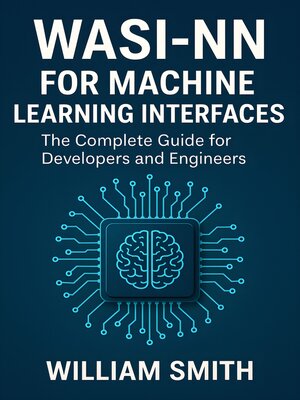WASI-NN for Machine Learning Interfaces
ebook ∣ The Complete Guide for Developers and Engineers
By William Smith

Sign up to save your library
With an OverDrive account, you can save your favorite libraries for at-a-glance information about availability. Find out more about OverDrive accounts.
Find this title in Libby, the library reading app by OverDrive.



Search for a digital library with this title
Title found at these libraries:
| Library Name | Distance |
|---|---|
| Loading... |
"WASI-NN for Machine Learning Interfaces"
"WASI-NN for Machine Learning Interfaces" offers an authoritative guide to leveraging the WebAssembly System Interface (WASI) for portable machine learning (ML) inference in modern computing environments. Beginning with a comprehensive deep dive into WebAssembly fundamentals and the evolution of WASI, the book lays a strong theoretical foundation and addresses both the infrastructure and security models required for deploying WebAssembly applications beyond web browsers. Readers are introduced to the motivations and design principles behind WASI-NN—the emerging API standard for ML inference—which emphasizes usability, portability, and robust host-guest separation for scalable, multi-platform ML solutions.
The core of the book thoroughly explores the WASI-NN architecture, covering the full pipeline of model loading, tensor memory management, inference graph construction, and advanced resource management strategies. Dedicated sections walk through integration with popular ML runtimes like ONNX and TensorFlow Lite, and examine support for custom hardware accelerators across heterogeneous edge and cloud deployments. With practical guidance on performance profiling, quantization, memory optimization, and energy efficiency, the text delivers actionable knowledge for maximizing inference throughput and reliability in real-world applications.
Beyond technical execution, the book gives special attention to security, privacy, and compliance, detailing effective threat modeling, sandboxing, key management, and regulatory considerations such as GDPR and HIPAA. It further explores best practices for application testing, continuous integration, and lifecycle management, ensuring readers are equipped to deliver secure and maintainable ML systems. The concluding chapters delve into the WASI-NN community ecosystem, standardization efforts, and emerging research directions, making this volume an essential resource for developers, architects, and researchers shaping the future of portable machine learning.







